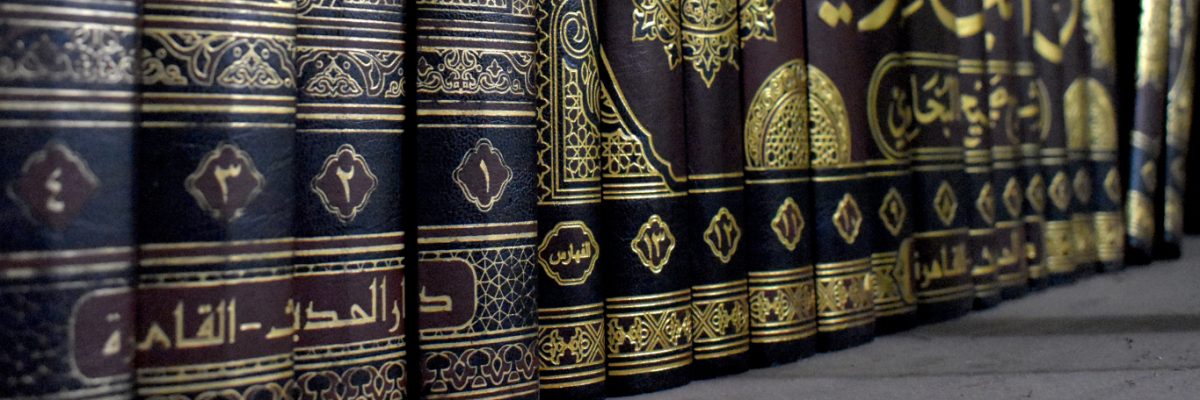Fatwa ID: 01632
Answered by Molana Ishaaq Hussain
Question:
1.Which shahadat should be given preference for the talqeen of the muhtadar ,the first shahadat or the shahadatain.?
2. From which side the qabr must be close with the plank for man and woman. The head side or the leg side.
3. In the niyyat of the janazah salaah, is it necessary for the muqtadis say within themselves “behind this imam”.
4. We used to walk in between the qabr with the shoes, I came across the hadeeth discouraging to walk with the shoes. What should we doing?
5.Can we eat the fruits and take home the flowers of the qabarastan. If not, what should be done with specially the fruits? Let it rotten on the trees.
6. What the Shariah say of planting on the qabr, especially after the burial. The flowers most of the time is taken from another qabr. Somrtimes we find big big plants on the qabr. Should we clean the qabr completely neat at all time.
Answer:
Soon after the signs of death become obvious, make the dying person lie on his back with the qiblah on his right. Turn the face slightly towards the qiblah. Raise the head a little by placing a pillow or some other head rest, in which case also the dying person will be considered as facing the Qiblah. (Death and Inheritance p22)
Sayyidna Abu Saeed Al Khudri Radiyallahu Narrates that the holy prophet sallallahu Alaihi Wasallam said: prompt the dying among you to say ‘Laa Ilaaha Ilallah ‘ (i declare that) there is no god but Allah. (Sahih Muslim,
The words in the Hadeeth mention ‘Laa Ilaaha illallah’, therefore one should act upon the Hadeeth above and prompt the dying by saying this Kalimaah.
Answer 2
There are two types of graves:
1: Lahd : This type of grave is dug up all the way down to the desired surface. Then, it is in the wall of the Qiblah that a niche is made.
2: Shaqq: The method is to dig the grave upto the depth of about one foot, then going deeper from the center, a hole is dug out the length of which is equal to the height of the deceased and its depth is equal to half his/her height, or full height, which is better.
Planks of wood are used to cover the ‘shaqq’ grave. There is no specific way/ side to place the planks into the grave. Infact Dr Abdul Hayy Arifi Rahmatullahi Alaihi (the Khalifah of Hakeemul Ummat Molana Ashraf Ali Thanwi Rahmatullahi Alaihi)has mentioned the following procedure, that if the grave is box type (shaqq), it should be closed from the top by placing planks or cement slabs or rock splinters over the shoulders of the side walls.(Death and Inheritance p.87)
Answer 3
The pre requisites of the janazah Salaah is that of the normal prayer. Just like one makes intention in normal prayer behind the imam, similarly, in Janazah Salaah he too will also make the intention of praying behind an imam. (Umdatul Fiqh p74 v2)
Answer 4
Most Scholars are of the opinion that it is permissible to wear shoes in the grave yard.
Sayyidna Anas  narrates. The prophet
narrates. The prophet  said: “ when a servant of Allah is put into his grave and his companions leave, he can hear the sound of their sandals.” (Sahih Bukhari, Muslim, Abu Dawud, Nasa’i)
said: “ when a servant of Allah is put into his grave and his companions leave, he can hear the sound of their sandals.” (Sahih Bukhari, Muslim, Abu Dawud, Nasa’i)
The Scholars deduce from this Hadeeth the permissibility of wearing shoes in the graveyard, as this is the only way the dead will hear the footsteps of the people leaving.
It is permissible to wear shoes in the graveyard. (Fatawah Mahmoodiyyah p393 v15)
Answer 5
The Graveyards that we visit belong to the council of that particular town or city. When a person dies, the grave is purchased/ leased from the council so that the deceased may be buried inside it,. The other items that are in the graveyards such as trees, fruits do not belong to us, they are in someone else’s ownership (council), this is why it will be impermissible to eat these fruits unless permission is granted to do so. (Fatawah Mahmoodiyyah p376 v15, Ahsanul Fatawaah p418 v6).
Answer 6
It is not permissible to place flowers on the graves as there is no basis of it in the Sharia. (Fatawa Mahmoodiyah p.173 v.9)
The incident of the Prophet of Allah  putting something on the grave was regarding a branch or twig and not flowers.
putting something on the grave was regarding a branch or twig and not flowers.
Once the Prophet of Allah  passed by two graves. He remarked, ‘they are both being punished in their graves; one of them never used to take due care when urinating and the other would tell-tale.’ The Prophet of Allah
passed by two graves. He remarked, ‘they are both being punished in their graves; one of them never used to take due care when urinating and the other would tell-tale.’ The Prophet of Allah  then took a twig from a date-tree, snapped it in two and inserted them on each grave. The Companions asked, ‘O Prophet of Allah! Why did you do that?’ He replied, ‘Perhaps their punishment will be lightened so long as the twigs do not dry.’ (Sahih Bukhari p.34 v.1)
then took a twig from a date-tree, snapped it in two and inserted them on each grave. The Companions asked, ‘O Prophet of Allah! Why did you do that?’ He replied, ‘Perhaps their punishment will be lightened so long as the twigs do not dry.’ (Sahih Bukhari p.34 v.1)
With regards to placing branches in the grave, the Hanafi Scholars have this act of the prophet  was specific to him only, hence it is preferable that one abstains from it. (Fatawah Darul Uloom Deoband p282 v5)
was specific to him only, hence it is preferable that one abstains from it. (Fatawah Darul Uloom Deoband p282 v5)
With regards to cutting the branches and tidying up the grave, this will be permissible.
Only Allah Knows Best
Written by Molana Ishaaq Hussain
Checked and approved by Mufti Mohammed Tosir Miah
Darul Ifta Birmingham


